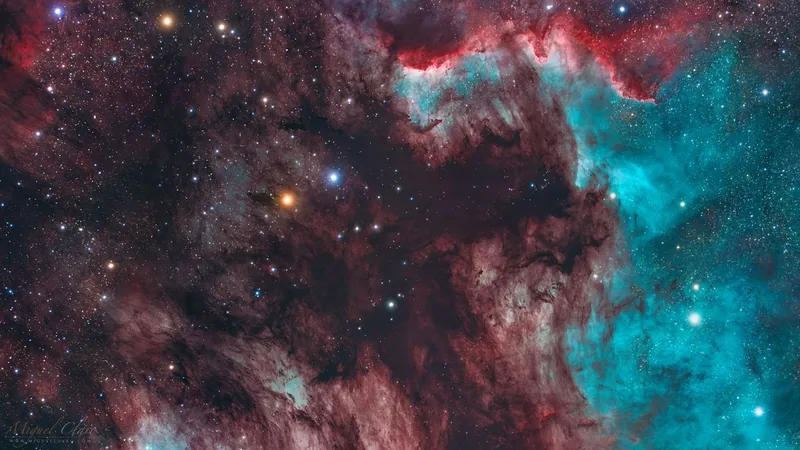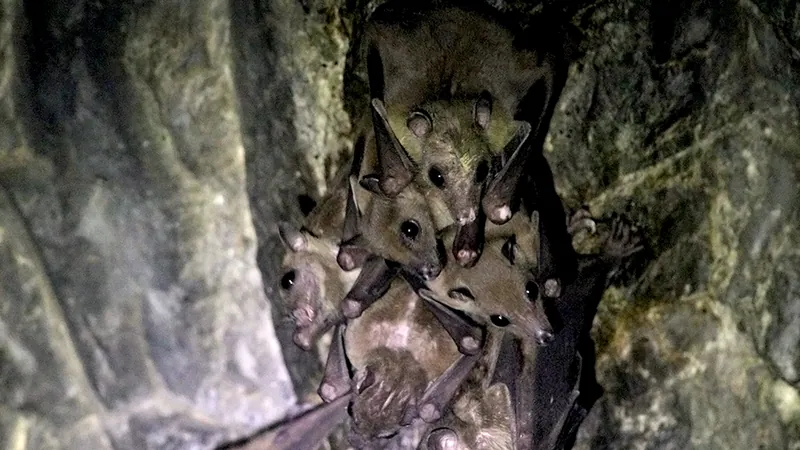
Unveiling the 'Great Dragon' of the Pelican Nebula: A Stunning Astrophotographic Marvel
2025-01-22
Author: Yu
Introduction
Renowned astrophotographer Miguel Claro, based in Lisbon, Portugal, has captivated the astronomical community with his latest breathtaking image of a formation he has dubbed the "Great Dragon of Pelican." As a professional photographer and science communicator, Claro specializes in astronomical "Skyscapes," blending the Earth's landscapes with the majestic night sky.
The Great Dragon of Pelican
This captivating photograph captures a dark region nestled between the Pelican Nebula and the Cygnus Wall, both integral parts of the North America Nebula within the constellation Cygnus. The North America Nebula, famously named for its resemblance to the continent, remains a popular target for astrophotographers. However, Claro notes that fewer images of the "hidden" dragon-like structure have been created, with only a handful available on platforms like Astrobin.
Dark Nebula LDN 935
In this particular image, Claro highlights the dark nebula LDN 935, which takes on the form of a Chinese Dragon. This stunning region is aptly referred to as the "Gulf of Mexico," especially when viewed from specific angles that evoke recognition of its earthly counterpart. The interstellar dust lanes present in this area are known to absorb and scatter light, contributing to the dramatic darkening of space between the Pelican Nebula and the Cygnus Wall.
The Cygnus Wall
As viewers gaze at the right edge of the image, the bright and vibrant Cygnus Wall comes into view—a veritable stellar nursery teeming with newly formed stars. The wall is actively eroded and illuminated by these bright young stars, some of which remain obscured behind the very dust they have generated.
The Pelican Nebula
On the left side of the frame, the Pelican Nebula shines brightly, representing a dynamic cloud of gas and ongoing star formation. Young, energetic stars are transforming the cold gas into hot gas, a process made visible by the ionization front that marks the boundary between the two regions. This front appears as an intricate orange-reddish area embellished with delicate filaments of cold gas.
Astrophotography Techniques
Claro used a cumulative total of ten hours of observation from the Dark Sky Alqueva observatory in Portugal to capture this image, employing a variety of wavelengths, including Ha (hydrogen-alpha), OIII (oxygen), and RGB light. His sophisticated setup included the Anit-Halo PRO Dual-Band 3nm filter and a Poseidon-C Pro Camera from Player One Astronomy, showcasing his commitment to detail and quality in the realm of astrophotography.
Viewer Engagement
To enhance viewer appreciation, Claro has also provided a starless version of the image, allowing enthusiasts to focus solely on the nebulosity. Additionally, an annotated version, created with the PixInsight software, features key astronomical catalogues to help viewers identify significant celestial objects within the frame.
Conclusion
In a world where the wonders of the universe often go unnoticed, Claro's "Great Dragon of Pelican" serves as a striking reminder of the beauty and complexity of our cosmos. Whether you are an aspiring astrophotographer or simply an admirer of the night sky, this image is sure to inspire awe.




 Brasil (PT)
Brasil (PT)
 Canada (EN)
Canada (EN)
 Chile (ES)
Chile (ES)
 Česko (CS)
Česko (CS)
 대한민국 (KO)
대한민국 (KO)
 España (ES)
España (ES)
 France (FR)
France (FR)
 Hong Kong (EN)
Hong Kong (EN)
 Italia (IT)
Italia (IT)
 日本 (JA)
日本 (JA)
 Magyarország (HU)
Magyarország (HU)
 Norge (NO)
Norge (NO)
 Polska (PL)
Polska (PL)
 Schweiz (DE)
Schweiz (DE)
 Singapore (EN)
Singapore (EN)
 Sverige (SV)
Sverige (SV)
 Suomi (FI)
Suomi (FI)
 Türkiye (TR)
Türkiye (TR)
 الإمارات العربية المتحدة (AR)
الإمارات العربية المتحدة (AR)